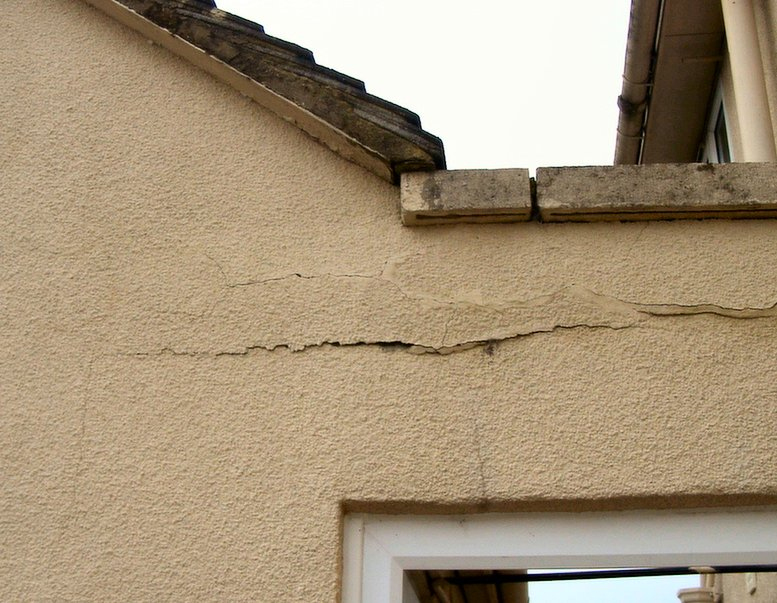Cracking in buildings BR 292
BRE Group (BRE) is a world-leading centre of built environment expertise, research and training, and includes a third-party approvals organisation offering certification of products and services to international markets.
The first edition of the BRE guide Cracking in buildings was published in 1996. The second edition, written by Ron Bonshor, Lesley Bonshor and Roger Sadgrove, was published in March 2016. Its aimed at all who own, occupy, design, build and maintain buildings.
Buildings and other built structures are moving all the time, but usually these movements are so small as to be unnoticeable. However, if a structure is unable to accommodate movement, cracking is likely to occur. The appearance of cracks can be visually unattractive and disconcerting for occupants, and if left untreated can affect the integrity, safety and stability of the structure.
The BRE guide describes the basic materials science behind the subject and explains how and why cracks occur. It provides a source of relevant information and provides a systematic approach for the reader to follow.
The first part looks at the causes of and mechanisms behind cracking, and the use of joints as safeguards against cracking. The second part examines the application of the science, and how cracking is effected by temperature, moisture, chemical and foundation movement. Appendices cover the classification of visible damage to walls, and provide a suggested approach to crack investigation.
This second edition updates references and aspects of the methodology that have changed since the first edition.
You can view a sample of, and purchase the book here.
[edit] Related articles on Designing Buildings Wiki
- BRE articles on Designing Buildings Wiki.
- BRE Buzz.
- BRE Trust.
- Burland scale.
- Cracking and building movement.
- Defective Concrete Blocks Grant Scheme.
- Defects in brickwork.
- Defects in construction.
- Defects in stonework.
- Efflorescence.
- Foundations.
- Ground heave.
- Home quality mark.
- Latent defects.
- Pyrite and mica redress issues in Dail Eireann.
- Reversible and irreversible expansion.
- Settlement.
- Thermal expansion.
- The history of fabric structures.
- Why do buildings crack? (DG 361).
[edit] External references
Featured articles and news
RTPI leader to become new CIOB Chief Executive Officer
Dr Victoria Hills MRTPI, FICE to take over after Caroline Gumble’s departure.
Social and affordable housing, a long term plan for delivery
The “Delivering a Decade of Renewal for Social and Affordable Housing” strategy sets out future path.
A change to adoptive architecture
Effects of global weather warming on architectural detailing, material choice and human interaction.
The proposed publicly owned and backed subsidiary of Homes England, to facilitate new homes.
How big is the problem and what can we do to mitigate the effects?
Overheating guidance and tools for building designers
A number of cool guides to help with the heat.
The UK's Modern Industrial Strategy: A 10 year plan
Previous consultation criticism, current key elements and general support with some persisting reservations.
Building Safety Regulator reforms
New roles, new staff and a new fast track service pave the way for a single construction regulator.
Architectural Technologist CPDs and Communications
CIAT CPD… and how you can do it!
Cooling centres and cool spaces
Managing extreme heat in cities by directing the public to places for heat stress relief and water sources.
Winter gardens: A brief history and warm variations
Extending the season with glass in different forms and terms.
Restoring Great Yarmouth's Winter Gardens
Transforming one of the least sustainable constructions imaginable.
Construction Skills Mission Board launch sector drive
Newly formed government and industry collaboration set strategy for recruiting an additional 100,000 construction workers a year.
New Architects Code comes into effect in September 2025
ARB Architects Code of Conduct and Practice available with ongoing consultation regarding guidance.
Welsh Skills Body (Medr) launches ambitious plan
The new skills body brings together funding and regulation of tertiary education and research for the devolved nation.
Paul Gandy FCIOB announced as next CIOB President
Former Tilbury Douglas CEO takes helm.
UK Infrastructure: A 10 Year Strategy. In brief with reactions
With the National Infrastructure and Service Transformation Authority (NISTA).
























